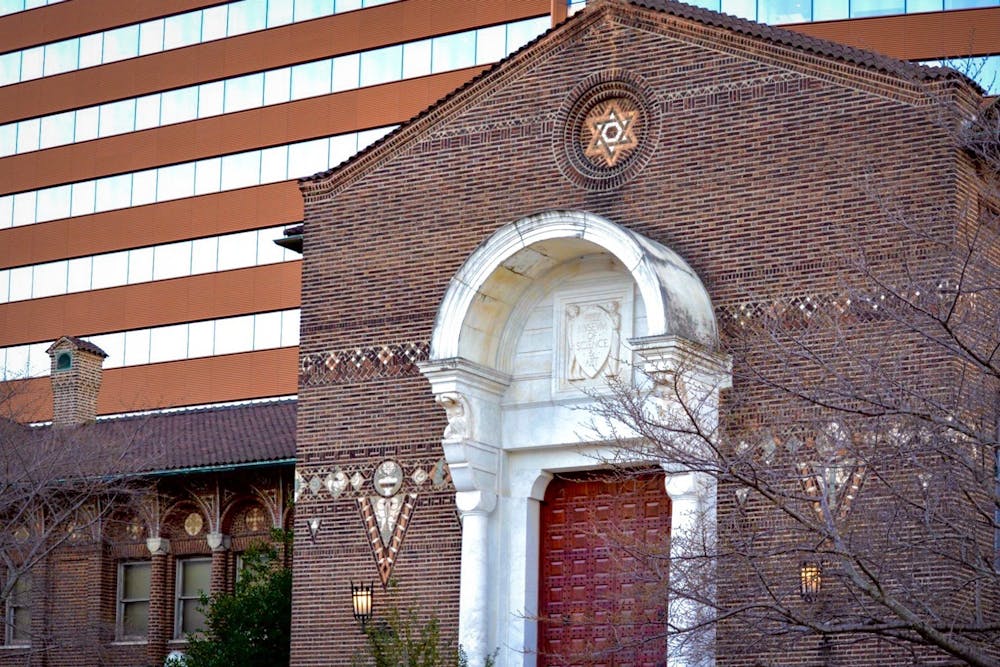Workers at The University of Pennsylvania Museum of Archaeology and Anthropology are currently voting on whether they will form a union.
The election comes on the heels of multiple scandals involving the Penn Museum that gained national attention, such as the Morton Cranial Collection, some of which belonged to enslaved individuals, and the Museum’s possession of the remains of children who were killed in a 1985 police bombing. While Museum staff said unionization was not a direct response to these scandals as much of the union work had been occurring behind the scenes for years, Museum staff see them as an embodiment of larger issues within the Museum and the timeline coincided with their decision to file for formal unionization.
Museum workers allege problems with administration and management, salaries, and safety conditions. In response to these underlying issues, Penn Museum workers filed to formally unionize in late May as part of District Council 47, a progressive Philadelphia labor union, Alexis North, a project conservator at the Museum, said.
The Penn Museum engaged in what some Museum workers describe as “union-busting tactics,” embarking on a campaign to encourage workers to vote against unionization by sending brochures to workers’ houses and having meetings with employees, Jessica Lubniewski, an Academic Coordinator at the Penn Museum, said.
In an emailed statement from the Penn Museum and University administrators to the Daily Pennsylvanian, the Museum said it supports its employees' rights to make an informed decision about the voting process.
"We fully support our employees’ right to make a free and informed decision, and we believe they are entitled to receive honest, factual information about the voting process and collective bargaining," the email wrote.
Employees must return their ballots to the National Relations Labor Board by August 3, according to Museum Educator Rebeccah Ulm.
Much of the collective organization of the Penn Museum Workers has occurred over the last few years. In June of 2019, then-Philadelphia Museum of Art curator Michelle Millar Fisher made a public Google Spreadsheet that allowed museum workers to give their positions and salaries and compare with others who did similar work.
RELATED:
Penn Museum, Philadelphia Museum of Art partner to offer summer discounts for visitors
Penn Museum to open new exhibit on fashion history called ‘The Stories We Wear’ in September
For some Penn Museum workers, like North, the spreadsheet revealed what she already knew to be long-standing issues in compensation among Penn Museum employees and museum workers writ large.
“It was really kind of like a flashpoint, I think, for museum staff members to come together and say, 'Wow, so many institutions have these same issues with compensation, not recognizing or respecting our responsibilities and our backgrounds or academics or education or experience'," North said.
As a project conservator, North’s position is defined as contractual. Despite having been employed for a number of years by the Museum and doing full-time work, she is not legally considered a full-time, permanent employee. Each year, she and others in her department have to have their contracts reviewed and renewed, which causes uncertainty and concerns about losing employment.
Other employees say that they were given no choice by the Museum except to work part-time, even though they did similar work to their colleagues working full-time. Ulm spent four years as a temporary employee at the Museum before her position was converted to permanent status.
“These types of designations feel like semantics and have very little to do with the actual roles that individuals play within the institutions,” Ulm said.
In this election, some employees have the ability to vote on whether they would like to form a wall-to-wall union, which would include professional employees and non-professional employees. Penn Museum Workers United, a group of union organizers at the Museum, encouraged fellow Penn Museum employees to vote 'Yes' in an Instagram video, arguing that a wall-to-wall union would provide employees with greater bargaining power.
In addition to issues with compensation, some employees feel compelled to unionize because they are concerned for their safety. Not only are many of the older artifacts and pieces that workers handle potentially hazardous; workers are also concerned about contracting COVID-19 on the job.
Last August, Museum workers were asked to come back to work in person, and were told they could be furloughed if they refused, North said. She added that Penn did not consider the Museum staff essential workers and they did not receive early vaccine access.
Other employees view unionization as an opportunity to demand more transparency from the Museum on administrative issues, and Ulm emphasized that she viewed unionization as a positive step for staff engagement with the Museum.
“I feel like the only outcome is more empowered workers who are more actively involved in the future of the Museum and in the way that the Museum functions within the community,” Ulm said.









